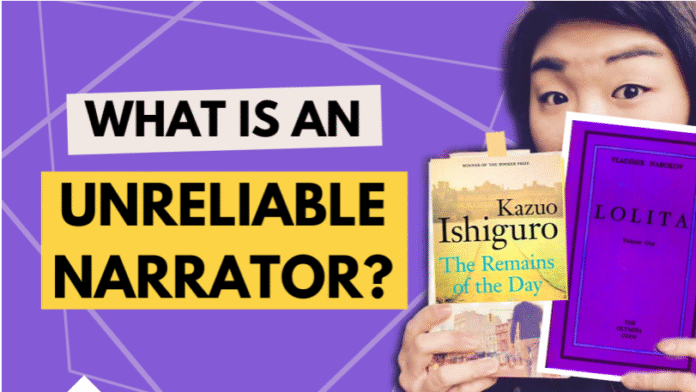Understanding the Unreliable Narrator
The term “unreliable narrator” refers to a narrator whose credibility is compromised, often leading readers to question the veracity of their account. This literary device is commonly employed to manipulate the narrative and evoke a range of emotional responses from the audience. By providing a skewed or limited perspective, unreliable narrators challenge traditional storytelling norms, inviting readers to engage in a deeper analysis of the text. The primary purpose of employing this technique is to enhance the complexity of the narrative and to highlight themes such as truth, perception, and moral ambiguity.
Unreliable narrators can be classified into various categories. First, there are the intentionally deceptive narrators who deliberately mislead readers. They may be motivated by self-interest or a desire to conceal the truth, creating a suspenseful atmosphere that propels the narrative forward. A classic example of this can be found in novels where the narrator might withhold critical information, leading readers to gradually uncover discrepancies in their story.
Another type of unreliable narrator includes those who are misguided or confused. These narrators may sincerely believe in their version of events, yet their perceptions are distorted by their emotions, mental state, or personal biases. This form introduces an element of tragedy, as readers witness the gap between the narrator’s understanding and the actual reality of the situation. Their flawed perspective can lead to powerful insights regarding the nature of human experience.
The significance of perspective and voice cannot be overstated when it comes to storytelling. An unreliable narrator not only shapes how the story unfolds but also influences the readers’ interpretations and conclusions. By forcing readers to piece together the truth from an unreliable lens, authors create a layered narrative experience that promotes active engagement, prompting critical thinking and reflection on the nature of reality and truth in fiction.
Creating Suspense and Tension
Unreliable narrators serve as a powerful tool in fiction, particularly in the effective creation of suspense and tension. By presenting skewed perceptions of reality, these narrators throw readers into a tangled web of doubt and intrigue. The art lies in how authors craft these characters to elicit strong emotional responses, often altering the reader’s trust in the story being conveyed. For instance, Gillian Flynn’s acclaimed novel, Gone Girl, expertly utilizes an unreliable narrator to maintain a gripping atmosphere throughout the narrative. The dual perspectives of Nick and Amy Dunne not only provide conflicting insights but also stimulate reader engagement through continuous questioning of the truth.
One key technique employed by these authors is foreshadowing, subtly planting seeds of doubt within the plot. A careful selection of details and hints allows the unreliable narrator to lead readers down a specific path, only to unveil shocking revelations later. This manipulation of information is crucial in sustaining suspense, as readers often find themselves reevaluating their assumptions with every twist. Unpredictability is heightened when narrative revelations emerge, which can reshape the entire understanding of the plot. Such a dimensional shift fosters a captivating reading experience, as individuals are compelled to reconsider past events in light of new information.
In addition to foreshadowing, plot twists play a significant role in enhancing tension within narratives featuring unreliable narrators. These unexpected turns not only surprise readers but also reinforce the complexities of the narrative structure. The psychological element of unpredictability creates an engaging dynamics, as individuals strive to piece together the concealed truths. Effective utilization of anticipation can leave readers on the edge of their seats, eagerly flipping through pages to uncover the true narrative beneath the unreliable exterior. Ultimately, through these techniques, authors harness the power of unreliable narrators to craft stories rich in suspense and emotional resonance, ensuring a captivating experience for the audience.
Exploring Themes of Truth and Perception
The use of unreliable narrators in fiction serves as a powerful tool for exploring themes of truth and perception. These narrators often present a skewed version of reality, leading readers to confront the complexities of belief and understanding. By challenging the norm of a straightforward narrative, authors invite audiences to question not only what is presented but also the validity of their own perceptions. This interaction between the narrator and the reader fosters a critical examination of reality, as it compels individuals to discern what is genuine from what is merely illusion—or, in some cases, a façade.
In F. Scott Fitzgerald’s “The Great Gatsby,” for example, the narrator Nick Carraway provides a lens through which readers engage with the themes of disillusionment and identity. While Nick presents himself as a reliable observer, his subjective experiences and biases significantly color the narrative. Through his eyes, we witness the opulence of Gatsby’s world, yet we are also privy to the underlying disillusionment that pervades this seemingly glamorous existence. The contrast between appearance and reality becomes painfully evident, prompting readers to grapple with the idea that truth may not be as easily discernible as it appears.
<psimilarly, a="" about="" and="" as="" authenticity="" between="" by="" characters="" compel="" complexities="" consideration="" contemplation="" context="" crafted="" create="" decisions.
Active Participation in Storytelling
The emergence of unreliable narrators in fiction catalyzes a unique engagement between the reader and the text. Rather than merely consuming a story, readers are prompted to assume an active role in the narrative process. Unreliable narrators often present subjective interpretations of events, thereby inviting readers to navigate through varying perceptions and conflicting truths. This intricate construction demands that readers actively participate, piecing together information to discern what is genuine and what is deceitful. The ambiguity of these narratives enriches the reading experience, pushing readers to not only absorb the storyline but also to question the legitimacy of the narrator’s accounts.
This fascinating interplay fosters critical thinking skills, as readers are encouraged to analyze the motives behind the narrator’s unreliable nature. The moral complexities presented by unreliable narrators serve as reflective mirrors, prompting individuals to confront their own interpretations of truth and morality. This self-reflection extends beyond the confines of the narrative and engages readers with broader philosophical questions about subjectivity and bias in storytelling. Through such engagement, the reader is empowered to challenge their assumptions and beliefs while developing a nuanced understanding of character motivations and plot developments.
<pfurthermore, a="" about="" active="" also="" an="" and="" as="" attention="" become="" between="" broader="" but="" complexities="" contemplating="" context,="" depth="" dialogue="" discussion="" dishonesty,="" drawing="" dynamic="" encourages="" engagement="" enhances="" enriches="" experience.="" exploration="" exploring="" fiction="" find="" for="" human="" implications="" integration="" into="" madness,="" medium="" narrative.="" narratives="" narrators="" nature="" not="" of="" only="" p="" power="" presence="" process="" profound="" reader="" readers="" reading="" reality.="" reinforces="" relationship="" result,="" societal="" springboard="" story="" such="" text.="" the="" theme="" themes="" themselves="" these="" this="" thus,="" to="" transforms="" truths.

